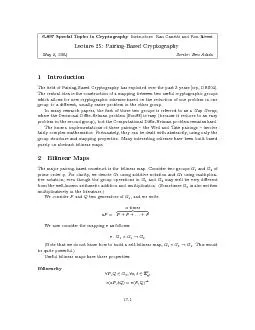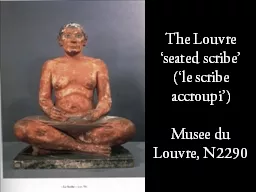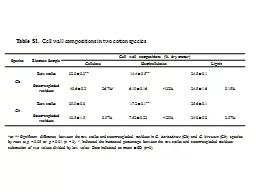PDF-Special Topics in Cryptography Instructors Ran Canetti and Ron Rivest Lecture PairingBased
Author : yoshiko-marsland | Published Date : 2014-12-24
897 Special Topics in Cryptography Instructors Ran Canetti and Ron Rivest Lecture 25 PairingBased Cryptography May 5 2004 Scribe Ben Adida 1 Introduction The 64257eld
Presentation Embed Code
Download Presentation
Download Presentation The PPT/PDF document "Special Topics in Cryptography Instructo..." is the property of its rightful owner. Permission is granted to download and print the materials on this website for personal, non-commercial use only, and to display it on your personal computer provided you do not modify the materials and that you retain all copyright notices contained in the materials. By downloading content from our website, you accept the terms of this agreement.
Special Topics in Cryptography Instructors Ran Canetti and Ron Rivest Lecture PairingBased: Transcript
Download Rules Of Document
"Special Topics in Cryptography Instructors Ran Canetti and Ron Rivest Lecture PairingBased"The content belongs to its owner. You may download and print it for personal use, without modification, and keep all copyright notices. By downloading, you agree to these terms.
Related Documents














